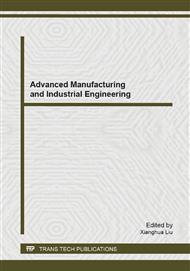p.235
p.239
p.245
p.249
p.253
p.259
p.265
p.271
p.275
Simulation Research on Soft-Starting for AMT Driving Belt Conveyor
Abstract:
Automated Mechanical Transmission (AMT) is applied as a new starting device for belt conveyor in the paper. Simulation model of AMT driving belt conveyor is established in AMESim. Simulations of start-up process at first gear condition and shifting process from first to eighth gear are discussed. Belt velocity is accepted as the law of gearshifts to judge the moment of shifting. Simulation results show that AMT could achieve the purpose of belt conveyor’s soft-starting gradually. The belt appears short-time acceleration mutations during shifting process which results in the belt maximum tension, the driving pulley torque, and other parameters changing within their allowable limits. The belt maximum tension appears short-time mutations when the clutch is just engaged, in which case the peak value of belt maximum tension can achieve 110 KN approximately, and is less than its allowable limit. After shift actions, the belt maximum tension and other parameters curves tend to be stable.
Info:
Periodical:
Pages:
253-258
Citation:
Online since:
August 2014
Authors:
Price:
Сopyright:
© 2014 Trans Tech Publications Ltd. All Rights Reserved
Share:
Citation:


